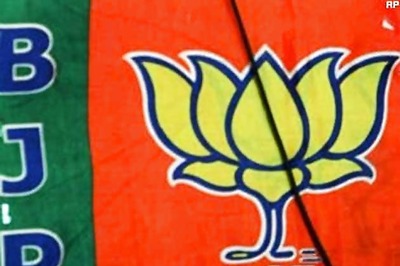
views
For a man dubbed on election eve as Divider-in-Chief by Time magazine, Narendra Modi had the last laugh on Counting Day. His stunning victory in General Elections 2019 shattered the age-old prisms of looking at India, as the Modi juggernaut levelled the divides of caste, demography, gender and geography that had defined Indian politics since Independence.
The enormity of the Modi victory can be encapsulated in one simple statistic: BJP’s provisional vote share as per the current trends stands at 48%. In other words, every second Indian voted for Modi as PM.
“India has united to elect us…It is a mandate from New India," Modi thundered from the BJP HQ in New Delhi, in his thanksgiving speech to party workers as the day wound down, adding that this election had presented a new narrative in front of the nation. “There are only two castes in the country now: poverty and people who fight poverty," he said.
The NDA landslide was a case of hard work and personal chemistry trumping cold arithmetic as the Modi-led BJP notched up a simple majority on its own (in terms of trends) while the National Democratic Alliance (NDA) looked poised to better its 2014 score of 332 – at last count the NDA was leading in 354 seats. The BJP on its own was leading at 303 seats.
The Congress failed to make any impact whatsoever despite a high-decibel campaign, and if the current trends hold it might not even be able to claim the Leader of Opposition status in Lok Sabha. At last count, the grand old party was leading at just 51 seats – half of which came from Kerala and Punjab – with its national president Rahul Gandhi struggling to retain the family borough of Amethi.
The much-feared SP-BSP combine in Uttar Pradesh was the only formation that put up any resistance worth noting, but the 10-odd seats that BJP might lose from its previous tally of 71 in UP could easily be offset by its stunning gains in West Bengal and Odisha. Mamata Banerjee in Bengal had the rug being pulled under her feet with BJP leading in 19 seats as against Trinamool Congress Party’s 22, while the wannabe architect of a federal front, Chandrababu Naidu, ended up losing his state to Jaganmohan Reddy’s YSR Congress Party.
BJP was up against three formidable alliances in the Hindi heartland states – UP, Bihar and Jharkhand. In all three, the caste arithmetic never suited the BJP. The party had won 117 out of 134 seats up for grab in these states in 2014.
In UP, BJP worked to mobilise all caste groups outside the catchment area of the so-called gathbandhan – Jatavs, Dalits and Muslims, which constitute a little over 40 % of the electorate. The BJP seems to have successfully mobilised the remaining 60% of the electorate. The non-Yadav OBC and non-Jatav consolidation behind BJP in the elections was seamless, making it a mobilisation against the haves by the have-nots among dalits and OBCs.
In Bihar, the lessons from the assembly polls were learnt well, and it helped BJP stitch a winning combination. Nitish Kumar still holds sway over some 15% of the ‘OBC plus development’ votes. Which is why the BJP made the Janata Dal (United) supremo an equal partner and contested five seats less than the 22 it won in 2014 to keep him in the alliance. In Jharkhand, BJP conceded one seat to All Jharkhand Student’s Union to consolidate the kurmi votes in the state. It helped BJP to stitch an upper-caste cum OBC alliance.
At the end of the day, the 2019 verdict that resonated from Kashmir to Kanyakumari was about the smart, swift and constantly-evolving tactics adopted by the Modi-Amit Shah duo. From candidate selection to matching Opposition slogan by slogan, the duo left no stone unturned. Unfazed by the controversies that ensued, BJP went out on a limb and fielded a bunch of fiery newbies such as the terror-accused Sadhvi Pragya in Bhopal, youngster Tejasvi Surya, cricketer Gautam Gambir, sufi singer Hans Raj Hans and Bhojpuri actor Ravi Kishan. Initial estimates indicate 80 of these 103-odd newbies contesting on BJP ticket were well on their way to the lower house.
This was in stark contrast to the scions of political dynasties taking on NDA candidates across the country: the Gowdas in Karnataka, Pawars in Maharashtra, Lalu Yadav family in Bihar, Mulayam family and Ajit Singh family in Uttar Pradesh, Gogois in Assam, and Chautalas in Haryana.
Meanwhile, international leaders such as Russia’s Vladimir Putin, China’s Xi Jinping and Sri Lanka’s President and Prime Minister have sent their congratulations to Modi on his victory. One of the first to congratulate the PM was his close friend and Israel Prime Minister Benjamin Netanyahu who tweeted in Hindi.
The man of the moment himself was unseen until his cavalcade rode into the BJP headquarters in the evening amid a sudden down pour. Through the day, he was heard only in a bunch of tweets, the first of which was lofty message that said ‘India has won again’. He also tweeted congratulatory messages to Jagan Reddy and Naveen Patnaik for winning the assembly polls of Andhra Pradesh and Odisha respectively.



















Comments
0 comment